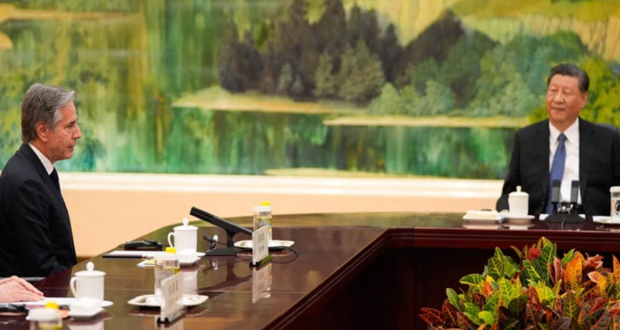When the United States (US) secretary of state, Antony Blinken, travelled to China last month, his purpose was threefold: First, to assess the concrete steps taken in the bilateral relationship since Presidents Joe Biden and Xi Jinping met in San Francisco in November 2023; second, to reposition the focal point of US-China relations within a rapidly shifting international landscape; and finally, to “de-risk” the bilateral relationship by ensuring that China maintains a favourable disposition towards Washington. To achieve that, Washington’s approach has been a combination of incentives and deterrents.
During the visit, lines were once again drawn between the two sides, highlighting simmering disputes on issues such as trade, technology, and security. There is a keenness in Washington to prevent these cracks from widening further, particularly in light of the repercussions of ongoing conflicts in Europe and West Asia. Of particular concern is the burgeoning China-Russia relationship, with the US expressing worry that China may be providing vital technologies to the Russian defence industry, thereby bolstering the latter’s capability to maintain battlefield advantages and undoing western support.
The Biden administration has initiated a tech competition with China since the passage of the 2022 CHIPS and Sciences Act, prompting retaliatory measures from China.
The Biden administration has consistently signalled a stance of cooperation alongside measures that have fuelled competition. On May 14, the US increased tariffs across strategic sectors such as steel and aluminium, semiconductors, electric vehicles, batteries, critical minerals, solar cells, ship-to-shore cranes, and medical products to curb China’s unfair trade practices in key sectors like tech transfer, innovation and intellectual property. Since the Anchorage summit in March 2021, when the bilateral relationship seemed to veer off course, the focus has been on “responsibly managing competition” from the US. Incidents such as former House Speaker Nancy Pelosi’s visit to Taiwan in August 2022 and the spy balloon incident in January 2023 have redrawn the boundaries of the US’s competitive approach towards China. Meanwhile, the Biden administration has initiated a tech competition with China since the passage of the 2022 CHIPS and Sciences Act, prompting retaliatory measures from China.




